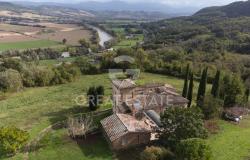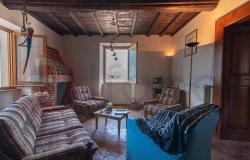Tuscania (not to be confused with the region of Toscana, or Tuscany) is a picturesque village in the Tuscia, an area that today coincides with the province of Viterbo (Lazio, central Italy), about an hour and 40 minutes from Rome.
Tuscania still carries the ancient traces of Etruscan civilization as well as those of its medieval history, and is also famous for the lavender fields that surround it.
Tuscania, like many other towns in the Viterbo area, stands on top of a promontory of tuff rock. According to legend, it was founded by Ascanio, son of Aeneas, on the spot where 12 dog puppies were found. The ancient Romans called it Tuscana, city of the Tusci, the name by which the Etruscans were called (in fact, the name ‘Tuscia’ once comprised most territories under Etruscan influence, which included Tuscany, Umbria and northern Lazio).
Founded around the 7th century BC, Tuscania grew and prospered under the Etruscan civilization, thanks to its strategic position. It was later conquered by the Romans, who introduced agriculture. In the Middle Ages, its architecture was renovated and can still be admired today.
The buildings in the historic center of Tuscania have that brownish-reddish color typical of the tuff rock that is everywhere in the area.
The town is best appreciated walking around its alleys, with picturesque views opening up on its squares, churches and fountains, and the landscape that surrounds it.
Among the highlights are the Acropolis on St. Peter's Hill, which today stands outside the city walls; the Sette Cannelle fountain, the oldest in the city, dating from the Etruscan-Roman period; the Baronial Palace built in tuff stone with portals and ogival doors dating from the 13th century.
As you walk along the main streets of the historic center, you can also admire the artisans at work who still follow the ancient techniques of working with terracotta for the production of ceramics, a craft that goes back a long time in Tuscania.
There are a few religious buildings worth seeing, like the Basilica of San Pietro, built in Lombard-Romanesque style that still contains many mosaics and ornaments; particularly impressive is the crypt, made up of four orders of central columns and a cross-shaped Gothic ceiling. The main church of Tuscania is the Cathedral dedicated to San Giacomo Maggiore; the facade is Renaissance in style, while the interior is Baroque.
You can also see remains of the ancient Via Clodia, which connected Tuscania with Rome. And Tuscania indeed makes for a great day trip from Rome.













